A well-designed website is essential for any cannabis business. It serves as the digital gateway to your brand and can have an enormous impact on how customers perceive and engage with your company. For cannabis brands, in particular, website design plays a crucial role in overcoming the stigma often associated with the industry and establishing legitimacy.
An optimized cannabis website enhances the overall user experience, builds trust in the brand, drives conversions and sales, and improves search engine optimization (SEO). Whether attracting new visitors, engaging existing customers, or competing with other brands, the functionality and polish of your website design can make or break your success. For cannabis companies, creating an intuitive, user-friendly website experience is key to growth.
Here are Several Reasons:
User Experience (UX):
Enhancing User Experience (UX). A well-designed website ensures a positive and intuitive user experience. By organizing content effectively, optimizing navigation, and incorporating user-friendly features, you can make it easier for visitors to find what they're looking for. Intuitive menus, clear product categorization, and easy-to-use search functionalities allow users to browse and locate specific cannabis products quickly. A seamless user experience leads to increased engagement, longer visit durations, and higher chances of converting visitors into customers.
- Intuitive menus and navigation
- Clear product categorization and search functionalities
- Improved engagement and longer visit durations
Credibility and Trust:
Establishing Credibility and Trust. In the cannabis industry, where legal regulations and stigmas exist, establishing trust and credibility with your website visitors is vital. A functional design demonstrates professionalism and reliability, creating a positive first impression. Elements such as clean layouts, visually appealing graphics, and well-structured product descriptions convey a sense of authenticity and expertise. A credible website design helps potential customers feel confident in your brand and encourages them to explore your offerings further.
- Professional and visually appealing design
- Well-structured product descriptions and graphics
- Conveying authenticity and expertise
Conversion Optimization:
Maximizing conversions and Sales. A functional website design is crucial for maximizing conversions. By strategically placing call-to-action (CTA) buttons, highlighting product benefits, and optimizing checkout processes, you can guide visitors towards making purchases. Clear and compelling product images, informative descriptions, and customer reviews can also boost conversions by addressing potential buyer concerns and influencing purchasing decisions. Furthermore, an optimized mobile experience is essential, as an increasing number of consumers are browsing and purchasing products through their smartphones.
- Strategic placement of call-to-action buttons (CTAs)
- Compelling product images, informative descriptions, and customer reviews
- Optimized mobile experience for increased conversions
SEO-Friendliness:
Improving Search Engine Optimization (SEO). SEO-Friendliness: Functional website design plays a pivotal role in optimizing your website for search engines. A well-structured website with clean code, fast loading times, and responsive design tends to rank higher in search engine result pages (SERPs). Additionally, search engines favor websites that offer a great user experience, as indicated by metrics such as low bounce rates, high session durations, and mobile-friendliness. By focusing on functional design principles, you can enhance your website's visibility in search results and attract more organic traffic.
- Clean code, fast loading times, and responsive design
- Higher ranking in search engine result pages (SERPs)
- Favorable user experience metrics for improved visibility
Problem Solving and Prevention:
Problem Solving and Prevention: A functional website design solves various issues and prevents potential problems. It ensures that your website is accessible to all users, including those with disabilities, by adhering to accessibility standards. It also prevents technical glitches, broken links, and error pages that can frustrate visitors and hinder their browsing experience. By implementing responsive design, your website can adapt seamlessly to different screen sizes, ensuring a consistent experience across devices.
- Adherence to accessibility standards for all users
- Prevention of technical glitches, broken links, and error pages
- Responsive design for consistent experiences across devices
Always First.
Be the first to find out all the latest news, products, and trends.
Here's a step-by-step guide on how Kief Studio would start the process of creating a functional cannabis website design:
Step 1: Initial Consultation
Initial Consultation
- Schedule a meeting with the client from Kief Studio to understand their specific needs and goals for the cannabis website design.
- Discuss their target audience, branding, product offerings, and desired features.
- Gather any existing branding materials, such as logos, color schemes, and brand guidelines.
Step 2: Research and Planning
Research and Planning
- Conduct market research to identify industry trends and competitors in the cannabis market.
- Define the website's structure, including the main navigation, product categories, and search functionalities.
- Create a wireframe or prototype to visualize the website's layout and user flow.
Step 3: Content Preparation
Content Preparation
- Collaborate with the client to gather and prepare the necessary content, including product descriptions, images, and any other relevant information.
- Ensure that the content is accurate, engaging, and optimized for SEO.
Step 4: Design and Development
Design and Development
- Based on the gathered requirements and wireframe, start the design phase by creating a visually appealing and functional website layout.
- Develop the website using a suitable content management system (CMS) like WordPress or Shopify, ensuring it is mobile-responsive and optimized for fast loading times.
- Implement intuitive navigation, clear product categorization, and user-friendly search functionalities.
Step 5: Integration and Functionality
Integration and Functionality
- Integrate e-commerce functionality, including a secure payment gateway and inventory management system, to facilitate online transactions.
- Implement features like customer reviews, wish list, and social sharing options to enhance user engagement and boost conversions.
- Ensure the website is compliant with industry regulations and follows best practices for cannabis-related businesses.
Step 6: Testing and Quality Assurance
Testing and Quality Assurance
- Conduct thorough testing of the website's functionality, usability, and responsiveness across various devices and browsers.
- Check for any broken links, compatibility issues, or potential performance bottlenecks.
- Make necessary refinements and adjustments based on user feedback and testing results.
Step 7: Launch and Optimization
Launch and Optimization
- Deploy the functional cannabis website design to the client's domain and hosting platform.
- Set up website analytics tools to monitor performance, user behavior, and conversion rates.
- Continuously optimize the website based on data analysis, SEO best practices, and user feedback.
Ready to get started!








